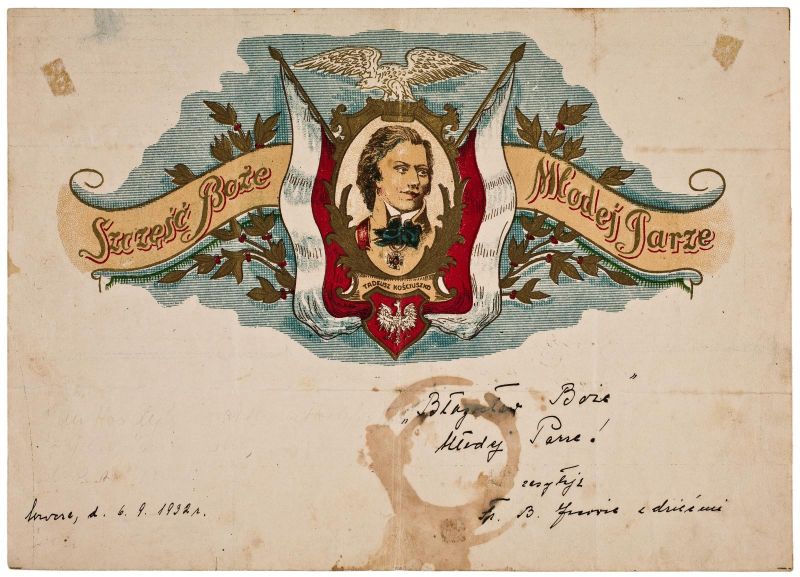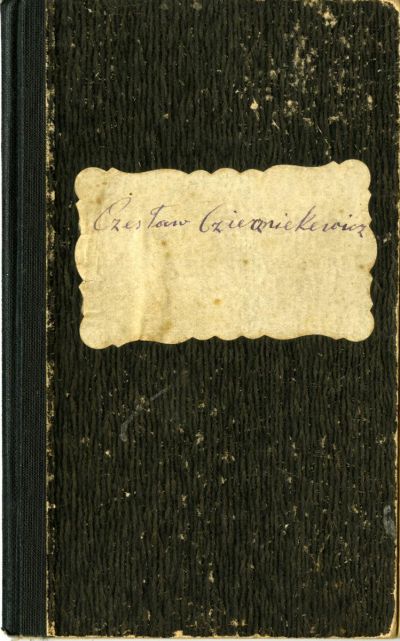“Faithful to the Fatherland, even in foreign lands”. Patriotic telegrams from the Polish diaspora in Wrocław
Mediathek Sorted












In the second half of the 19th century, Poles, particularly those in Greater Poland, were under a lot of pressure due to the many restraints imposed on them by the occupying force, whose ultimate aim was to germanise the Polish population. This was the “longest war in modern Europe”. Meanwhile, the Poles consolidated in the spirit of national and economic solidarity. These efforts took the form of patriotic education and training for young people as well as setting an example by demonstrating reliability and conscientiousness in all areas of life. The Polish population in Greater Poland showed their opposition in a remarkable way by remaining faithful to their ideals in a clever, skilful, creative way and with resilience and cheerfulness. This was the only way they could withstand their worst and most determined, cunning and inveterate enemies, the “Iron Chancellor” Otto von Bismarck and the Deutschen Ostmarkenverband. They proved that no force in the world could drive the Polishness from their hearts.
The fight to retain their national identity took many forms. One of the most original was the issuing of decorative coloured lithographs depicting patriotic historical motifs which could be sent out to commemorate family, national or religious holidays. The were referred to as “patriotic telegrams“ or as “Kościuszko telegrams” because the first prints bore the image of Tadeusz Kościuszko. The first blank telegrams appeared in Poznań in 1895 at the initiative of Maria Łebińska, the wife of the writer and editor-in-chief of the “Wielkopolanin” newspaper Walery Łebiński[7], and of Teodora Kusztelan, the wife of the finance expert and economic activist Józef Kusztelan. The two women set up a committee to publish congratulation cards (Komitet do Wydawania Kart Gratulacyjnych), which was also known as “Women’s Committee” (Komitet Pań) or “ Poznań Committee” (Komitet Poznański). The profits from the sale of the cards were used for national, social and charitable causes.[8]
The “patriotic telegrams” spread quickly and showed a range of images of historical personalities, of heroes in the fight for independence, and of national symbols and coats of arms. To make it easier to use the pre-printed telegrams, simple, amusing texts were prepared for each occasion, which could be looked up in the book “Bukiet Dobranych Powinszowań wierszem i prozą, życzeń do Telegramów Kościuszkowskich” (A bunch of appropriate congratulations for Kościuszko telegrams in prose and poetry) published in Innowrocław.[9]
From 1912, the pre-printed patriotic forms for the telegrams were also published by Towarzystwo Czytelni Ludowych (Association of Public Libraries).[10] This institution made a considerable contribution to promoting the education of Polish inhabitants in Prussia by maintaining libraries and reading rooms with Polish literature and organising lectures and educational events. The work of this association can certainly be considered to have been passing on the intellectual heritage of Juliusz Słowacki who, in his poem “Mój Testament” (My Testament), urgently implores:
“Lecz zaklinam – niech żywi nie tracą nadziei
I przed narodem niosą oświaty kaganiec”[11](I entreat that the living do not bury their hope and
carry the light of enlightenment before the people)
The designs for the association’s pre-printed telegrams were created by a number of artists, including Jerzy Hulewicz, Kazimierz Kościański, Tadeusz Szafrański, Franciszek Tatula, Wiktor Gosieniecki and Paulin Gardzielewski. The designs by Kazimierz Kościański (1899 – 1973), who co-founded the Poznań Group Twór (The Work) in 1933, are or particular interest.[12] His designs contain geometric lines, flat coloured areas and rhythmic compositions, embodying the forms of expression characteristic of Art Deco. His pre-printed telegrams bearing the images of Adam Mickiewicz and Ignacy J. Paderewski certainly have an artistic quality, which could not be said for all of the forms created.
[7] “Wielkopolanin”, No. 44 from 24 February 1915.
[8] K. Matysek, Telegramy kościuszkowskie i narodowe świadectwem patriotyzmu Wielkopolan, [in:] Aksjosemiotyka karty pocztowej II, published by P. Banaś, Acta Universitatis Wratislaviensis, No. 2377, Prace Kulturoznawcze VIII, Wrocław-Warszawa 2004, p. 109.
[9] J. Aleksiński, Telegramy Kościuszkowskie, Antiquitates Minutae, Poznań 2003, p. 3.
[10] J. Sobczak, Wielkopolskie telegramy kościuszkowskie, [in:] Polski obyczaj patriotyczny od XVIII do przełomu XX/XXI w. – ciągłość i zmiana, published by A. Stawarz and W. J. Wysocki, Warszawa 2007, p. 119.
[11] J. Słowacki, Dzieła wybrane, Vol. 1: Liryki i powieści poetyckie, published by J. Krzyżanowski, Wrocław-Warszawa-Kraków- Gdańsk 1979, p. 44.
[12] “Nowy Kurier”, No. 128 from 4 June 1933.
























































































